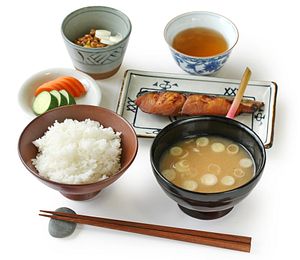Japan’s traditional cuisine, washoku, received UNESCO designation as an Intangible Cultural Heritage of Humanity earlier this month. Though the term washoku refers to the culture of Japanese food – including its time-consuming preparation and even the way it should be eaten – it is often embodied by a healthy combination of rice, fish and locally sourced vegetables.
Washoku’s intricacies may be a major cause for its declining popularity in Japan, as busy office workers and impatient youngsters opt for the instant gratification of fast food.
“Annual rice consumption in Japan has fallen 17 percent over the last 15 years,” said the Tokyo Times. “Fast-food can now be found anywhere. It attracts customers with cheap prices and fast service.”
A study published in the journal EuroMonitor International found that the Japanese fast food industry grew by 4 percent last year. Aside from Japan’s ubiquitous McDonalds and Kentucky Fried Chicken outlets, the market for convenience store fast food – often in the form of fried snacks and “bento” lunch boxes – expanded by 8 percent in 2012.
“As Japan has an ageing population and the number of single-person households is likely to grow, the demand for home meal replacements, including convenience store fast food, will increase,” the study reported.
Japan’s notoriously long work hours certainly contribute to the popularity of eating on the go. The country coined the term karoshi, or death by overwork, with some victims alleged to have worked 14-hour shifts seven days a week. With more than 50,000 convenience stores operating in Japan, a quick and easy meal can often be had just around the corner.
As more and more young people in Japan are exposed to bold international cooking, their taste buds may begin to lose an appreciation for washoku’s understated mixture of sweet, sour, salty and bitter – a flavor palate that’s called umami in Japanese.
“That’s a delicate subtle taste. But younger people can’t even taste it anymore because they’re too used to spicy oily food,” Isao Kumakura, president of Shizuoka University of Art and Culture, told the AP. “It’s Westernization. Japanese should be more proud of Japanese culture.”
Although washoku may be losing its popularity among certain segments of Japanese society, it remains a delicacy for outsiders. According to a government survey of 4,000 Asian visitors to Japan, 58 percent listed Japanese food as their number one reason for coming.
Japan boasts 27 three-star restaurants in the 2014 Michelin guide (its highest rank), a number matched only by France. Tokyo remains the “most gourmet” city in the world according to the international restaurant rating group, boasting 13 of the country’s three-star establishments.

































